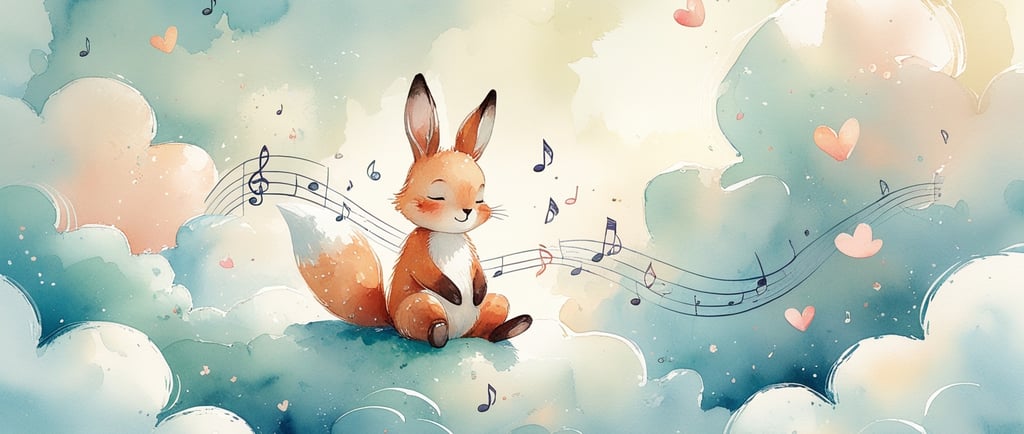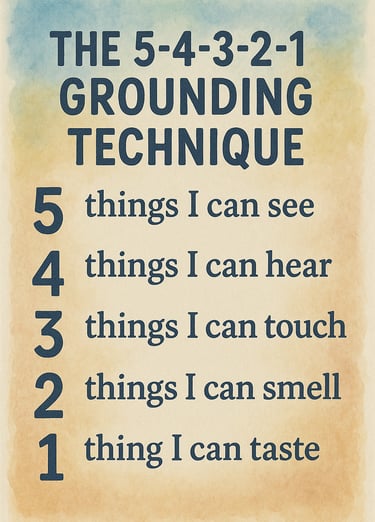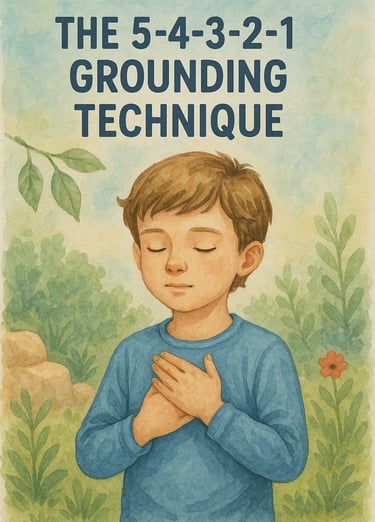The Psychology Behind "Anxiety's Not the Boss of Me"
A Parent's Guide to Empowering Anxious Children
8/11/20256 min read


The Psychology Behind "Anxiety's Not the Boss of Me": A Parent's Guide to Empowering Anxious Children
How one song can transform your child from anxiety's victim to anxiety's manager
"Mom, I can't stop worrying. It feels like my brain won't turn off."
If your child has ever said something like this, you know that helpless feeling of watching them struggle with anxiety while traditional advice falls flat. You've probably tried the well-meaning suggestions: "Just don't worry," "Think positive thoughts," or "You'll be fine."
But here's what I've learned after years of working with anxious children: The goal isn't to eliminate anxiety – it's to teach kids they can be the boss of it.
That's exactly why I created "Anxiety's Not the Boss of Me" – not just as a song, but as a complete psychological intervention disguised as music your child will actually want to listen to.
The Problem with Traditional Anxiety Advice for Kids
Before we dive into how music can help, let's talk about why most anxiety advice fails our children.
Why "Don't Worry" Doesn't Work
When we tell an anxious child "don't worry," we're essentially asking them to stop a natural brain function. It's like telling them "don't breathe" or "don't blink." Anxiety isn't a choice – it's an automatic response from an overprotective nervous system.
What happens in your child's brain during anxiety:
The amygdala (fear center) sounds the alarm
Stress hormones flood their system
Logical thinking goes offline
Fight-or-flight mode activates
Telling them to "just relax" is like shouting instructions to someone in the middle of a fire drill. They literally cannot access the part of their brain that processes logic and reason.
The Victim vs. Manager Mindset
Here's the crucial difference that changes everything:
Victim Mindset: "Anxiety is happening TO me, and I'm powerless to stop it." Manager Mindset: "Anxiety is visiting me, but I'm still the boss of my choices."
The first creates helplessness. The second builds resilience.
The Science Behind "Anxiety's Not the Boss of Me"
This song isn't just feel-good music – it's based on proven psychological principles that help children develop what psychologists call "emotional regulation."
Cognitive Behavioral Therapy for Kids
The song teaches core CBT concepts in language children understand:
"Anxiety's like a fire alarm going off for no reason" This lyric helps children understand that anxiety is often a false alarm. Just like a smoke detector that goes off when you burn toast, anxiety sometimes activates when there's no real danger.
"I can hear it, but I don't have to believe it" This teaches the crucial skill of observing anxious thoughts without being controlled by them. It's the difference between "I am anxious" and "I am experiencing anxiety."
The 5-4-3-2-1 Grounding Technique
Embedded in the bridge of the song is one of the most effective anxiety management tools therapists use:
"5 things I can see, 4 things I can hear
3 things I can touch, and the anxiety gets less severe
2 things I can smell, 1 thing I can taste
Grounding myself in this moment, this time and place"
This isn't just poetic – it's a clinical intervention that:
Activates the parasympathetic nervous system (the "calm down" response)
Redirects attention from internal worry to external reality
Provides a concrete tool children can use anywhere, anytime
Neuroplasticity and Repetitive Messaging
Every time your child listens to this song, they're literally rewiring their brain. Neuroplasticity research shows that repeated positive messages create new neural pathways, making healthier thought patterns more automatic over time.
The key phrases like "I'm stronger than I thought I was" and "This feeling's real but it won't last" become mental shortcuts your child can access during stressful moments.
How to Use This Song as a Parenting Tool
The magic isn't just in the listening – it's in how you integrate this song into your family's anxiety management toolkit.
The Right Way to Introduce the Song
DON'T: Play it during a panic attack and expect immediate results DO: Introduce it during calm moments so it becomes a familiar comfort
Step 1: Casual Introduction Play the song during car rides or while doing activities together. Let them hear it naturally without pressure to discuss it immediately.
Step 2: Gentle Exploration After they've heard it a few times, you might say: "I noticed that song talks about anxiety like it's a visitor, not an owner. What do you think that means?"
Step 3: Practical Application Once they're familiar with the concepts, you can reference the song during anxious moments: "Remember what the song says about that fire alarm? What do you think your anxiety alarm is trying to tell you right now?"
Teaching the 5-4-3-2-1 Technique
The grounding technique in the song becomes infinitely more powerful when children know how to use it intentionally.
Practice during calm moments:
Make it a game: "Let's play the 5-4-3-2-1 game!"
Use it during routine activities: waiting in line, before bedtime, during car rides
Celebrate their observations: "Wow, you noticed things I didn't even see!"
Apply during anxious moments:
Reference the song: "Want to try the technique from your song?"
Do it together: "I'll find 5 things with you"
Stay patient: It takes practice to use tools during stress
Creating "Anxiety Boss" Conversations
The song's central metaphor – that anxiety visits but doesn't own you – opens up powerful conversations:
Questions to explore:
"If anxiety was a visitor in your house, what would you want to tell it?"
"How do you think the boss of anxiety would act differently than someone who works for anxiety?"
"What are some choices you can make even when anxiety is visiting?"
Reframe their language:
Instead of "I'm so anxious," try "I'm experiencing anxiety right now"
Instead of "I can't do this," try "This feels hard AND I can try anyway"
Instead of "What if something bad happens," try "My anxiety is showing me it cares about me staying safe"
Age-Specific Applications
Ages 6-9: The Anxiety Helper Younger children often personify anxiety. Help them imagine anxiety as a character who means well but sometimes gets confused about real dangers.
Ages 10-13: The Scientific Approach This age group responds well to understanding the "why" behind anxiety. Explain the evolutionary purpose of anxiety and how the techniques work.
Ages 14+: The Empowerment Focus Teenagers need to feel in control of their own healing. Position the song's tools as skills they're choosing to develop, not strategies being imposed on them.
Your Next Steps
If you're ready to help your child shift from being anxiety's victim to anxiety's manager, here's how to begin:
This Week:
Listen to the song together during a calm moment
Notice their reaction without pressure to discuss immediately
Learn the 5-4-3-2-1 technique yourself so you can model it
This Month:
Practice the grounding technique during non-anxious times
Introduce the "anxiety as visitor" concept through casual conversations
Use song references during mildly stressful moments
Ongoing:
Make this part of your family's emotional vocabulary
Celebrate small wins when they use their tools
Stay patient – building these skills takes time
A Personal Note
As someone who has watched countless families transform their relationship with anxiety, I want you to know: your child is not broken, and neither are you. Anxiety is incredibly common in children today, and learning to manage it is a skill that will serve them for life.
The fact that you're reading this article tells me you're the kind of parent who seeks solutions rather than accepting struggle as inevitable. That mindset – that determination to help your child thrive – is already creating the foundation for their healing.
Remember: every time your child chooses to use these tools, they're not just managing anxiety in the moment – they're building confidence in their ability to handle whatever life brings. That's the gift that keeps giving long after childhood ends.
Ready to empower your anxious child? Start with "Anxiety's Not the Boss of Me" and watch as your child discovers they have more power over their anxiety than they ever imagined.
Because when children learn they can be the boss of their anxiety, they don't just survive their challenges – they thrive through them.
Have you tried using music to help your anxious child? Share your experience in the comments below – your story might be exactly what another struggling parent needs to hear.






